
Article contents

The best pension provider to transfer to is PensionBee – it’s easy to use, has low fees, and a great track record of growing money over time. They’ll take care of the whole pension transfer too, you just need to provide a few details. Beach is also great, it's an easy to use app allowing you to invest sensibly within a tax-free ISA and a pension pot.
Just switched to a new job and looking to move your old pension? Or is your current pension not performing very well? Don't worry, you're in the right place. Here’s the best pension providers to transfer to.
Note: We’ll run through how we compare pension providers a bit later on too – so you know how to make the right decisions for yourself.
And, we’ve also covered everything you need to know about transferring your pension, all your transfer options, and pensions themselves (if you are looking for a pension overview).
Where the experts handle the investments – just sit back and relax.
PensionBee tops the list – it’s easy to use, has low fees and a great track record of growing money over time.
Get £50 added to your pension



PensionBee is our recommended provider – they’ve thought of everything.
Their 5 star rated app (and website) makes it easy to set up and use. You can open a brand new pension, or transfer your existing pensions across (they’ll handle all the paperwork).
Simply pick from an easy to understand range of pension plans, and that’s it, the experts manage everything from there.
It’s low cost, with one simple annual fee. The customer service is excellent, and you’ll get a dedicated account manager for any questions you might have.

And, when the time comes to retire, withdrawing from your pension is easy too.
You can also use them if you're self-employed or a company director.
Great app



A great and easy to use pension. Add money from your bank or combine old pensions into one, (they’ll find lost pensions too).
The customer service is excellent, with support based in the UK.

Beach is an easy to use pension app (and easy to set up), where you just add money and the experts handle everything. It’s all managed on your phone with a great app, and you can see your total pension pot whenever you like.
If you’ve got lost or old pensions, Beach can also find them and move them over too, so you can keep all your retirement savings in one place, and never have to worry about losing them in future.
You’ll get an automatic 25% bonus on the money you add to your pension pot from your bank account (tax relief from the government), which refunds 20% tax on your income, and if you pay 40% or 45% tax, you’ll typically be able to claim the extra back too.
The pension plan (investments) are managed by experts, who are the largest investment company in the world (BlackRock). And they consider things like reducing climate change, meaning your savings could make the world a little better in future too.
You can also save and invest alongside your pension with an easy access pot (access money in around a week), designed for general savings, with the investments managed sensibly by experts too. And money made can be tax-free within an ISA.
Fees: a simple annual fee of up to 0.73% (minimum £3.99 per month).
Minimum deposit: £25
Customer service: excellent
Pros:
Cons:
PensionBee tops the list – it’s easy to use, has low fees and a great track record of growing money over time.
Where you manage your own investments.
0% fees



InvestEngine is a super low cost investment platform allowing you to save and invest within a pension and an ISA, and with a great range of investment options.
There's no fees for an account, and no commission to buy and sell investments. And there’s a wide range of investment options, with over 700 investment fund options (ETFs only).
It's more than just low cost though, it’s pretty easy to use, there’s some great features to help you invest, and the customer service is excellent.
Minimum deposit: £100
Best for: those looking for a low cost platform with a range of fund options

• Easy to use
• Very low cost
• Commission-free
• Great range of ETFs
• Great customer support
• Only ETFs (but a wide range)
• No financial advice
Offers available



Interactive Investor is a well established company, and very popular.
Instead of paying a percentage of the investments in your account (like other investment companies), you’ll instead pay a fixed fee per month – and it’s pretty low, starting at just £5.99 per month for a pension (SIPP).
This makes it one of the cheapest SIPP providers out there, especially if you have a fairly sizeable amount within your pension (e.g. over £30,000).
On top of that, there’s a huge range of investment options (e.g. shares and funds) – one of the largest.
It's easy to use, and the website and app are great. The customer service is excellent too.
A great choice overall.




AJ Bell is well established, with a good reputation.
It's one of the cheapest SIPPs out there (charging a low annual fee).
There's a huge range of investment options – pretty much every investment out there (including both funds and shares).
The customer service is excellent too.
Overall, it's one of the best options for a SIPP.

PensionBee tops the list – it’s easy to use, has low fees and a great track record of growing money over time.
If you're a bit unsure about pensions and would prefer to speak to an expert, check out Unbiased¹ – it's a free service to find pension experts (financial advisors) in your local area.
Finding the right pension provider (a pension company) for you can be pretty tough – there’s a wide range of pension providers, different types of pensions, pension schemes, and pension plans you choose from, it can all get pretty confusing.
But don’t worry, we’ll explain all, and we’ve researched a wide range of options to determine the best pension provider to transfer to.
Here’s what we looked at for each provider:
We mentioned there’s a lot of pension providers out there. And, lot’s of different types of pensions too (covered below), but we’re just showing you the very best pensions to transfer your pension to – ones that we recommend to our friends and family (and our lovely readers of course), and use ourselves here at Nuts About Money.
That means you can be confident that whichever one of our recommendations you choose, you’ll be using one of the top options out there.

Interested in learning more? Here’s our full review methodology and how we test.
When transferring your pension, there’s two main options to choose from:
Now, there’s one recommended option here, even though there’s two choices – and that’s transferring your pension to a personal pension – there’s loads more benefits, which we’ll cover in detail below. In short, you can benefit from low fees, and potentially, your money could grow a lot more over time (find out by how much with our pension calculator).
Don’t worry if you’re not sure what a personal pension is yet, that’s what we’re here for.
A personal pension is a pension that you choose to set up, and you choose to add money (make contributions). It’s different from a workplace pension, also called an employer pension, which is a pension set up by your employer if you start a new job (explained below).
It’s also different from the government pension (State Pension), which you could get at State Pension age (retirement), currently 66 years old – and only if you’ve paid enough National Insurance contributions over your life (at least 10 years, but 35 years to get the full amount).
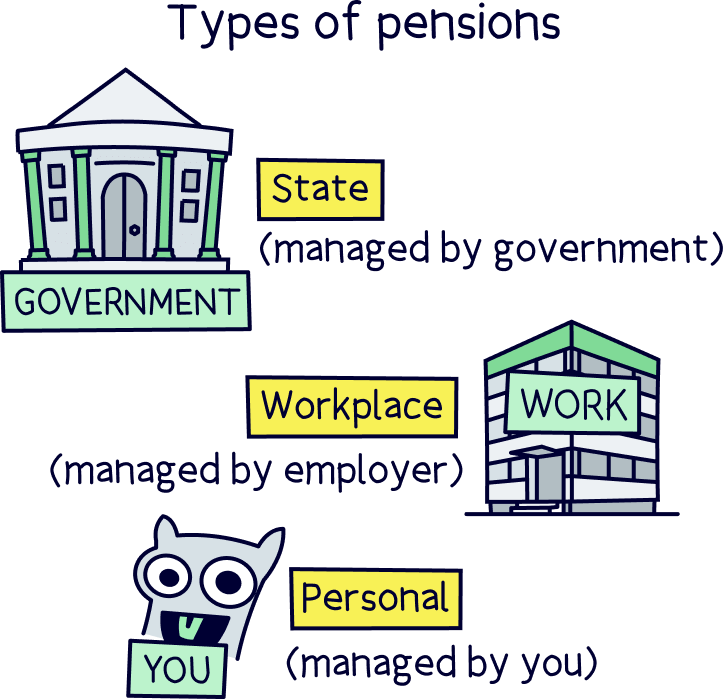
The full State Pension amount is currently £230.25 per week (less than minimum wage), so you can see why you’ll need your own pension too.
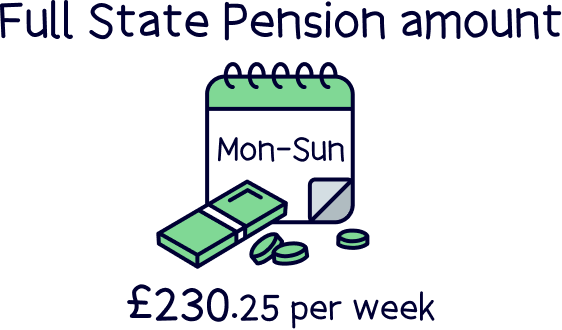
Note: both a personal pension and workplace pension are types of private pensions as they are private to you, you own them. The words 'private pension' is often used instead of 'personal pension'.
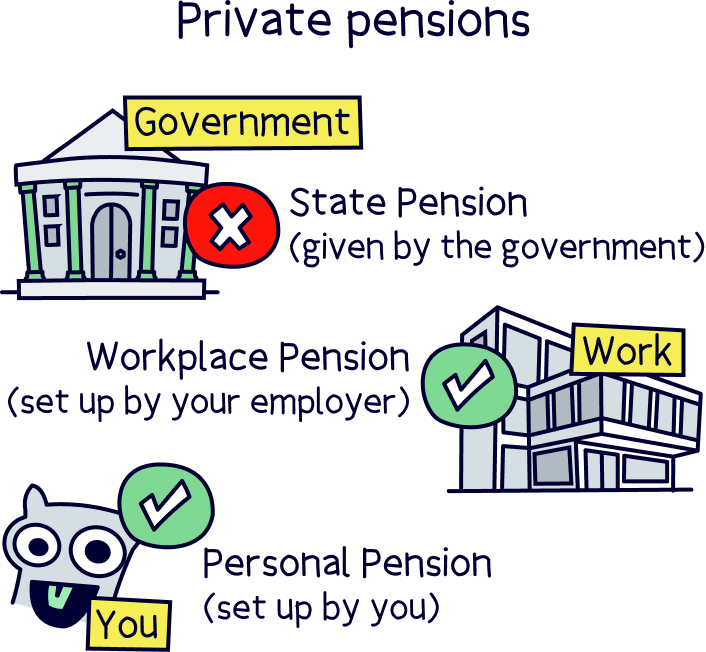
With a personal pension, you’ll get a massive 25% bonus on all of your contributions automatically (we’re not joking!). Why? This is to refund the tax you’ve paid on your income (e.g. your salary), as saving for a pension is intended to be tax-free.
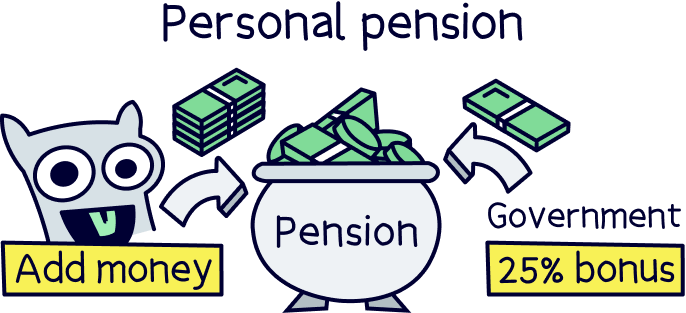
And, if you’re a higher rate taxpayer (earning more than £50,270 per year, and paying 40% tax), or an additional rate taxpayer (earning more than £125,140 per year, and paying 45% tax), you can claim some of the tax paid at those rates too. You can do this on a Self Assessment tax return.
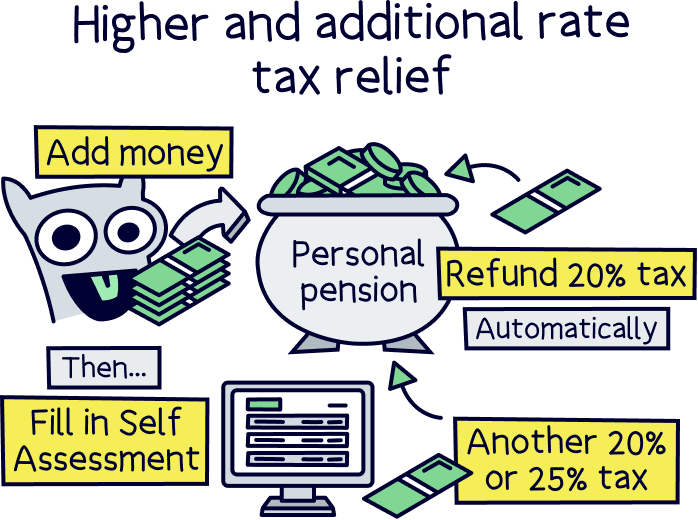
You can estimate your total pension pot at retirement and your yearly retirement income with our pension calculator.
You can contribute up to your total income per year (e.g. your salary) with a maximum limit of £60,000 per tax year (April 6th to April 5th the following year). These limits are a total of all of your pensions, including workplace pensions (see below).
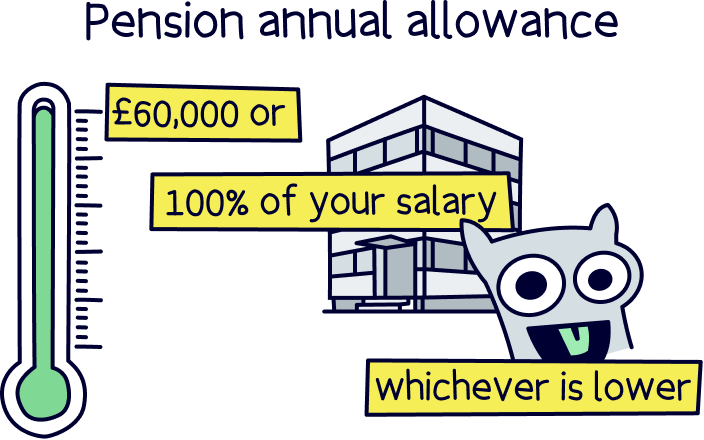
Note: as it's a pension, you won’t be able to access your money until you’re at least 55 years old (57 from 2028). If you want to save, but think you might want to access the money sooner, you could consider a tax-free Stocks and Shares ISA.
Nuts About Money tip: personal pensions are a great way to boost your retirement savings, and contribute to your total pension pot – most people will likely need one to help build a hefty pension pot that we’ll need in the future – for a comfortable retirement of £43,100 per year, you’ll need a pension pot of £853,039! (on top of receiving the State Pension).
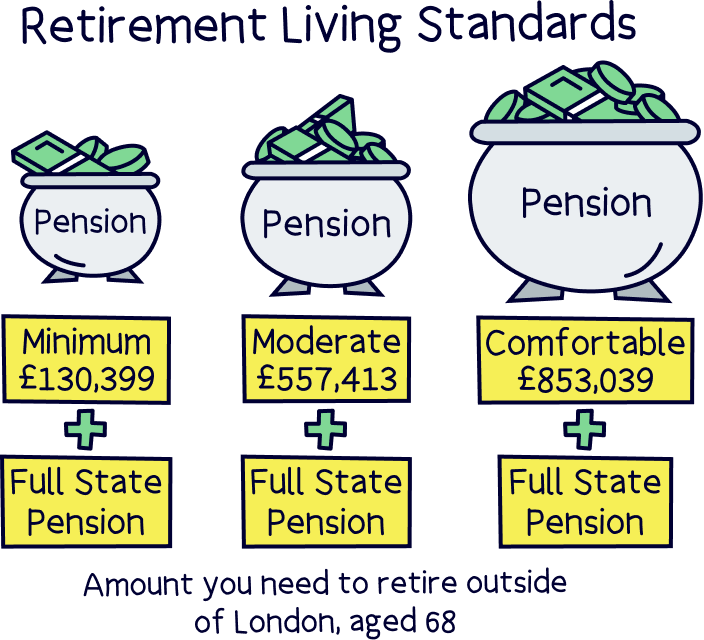
If you're young(ish), don't panic, it’s definitely possible to build up a nice big pension pot (these numbers aren't as unrealistic as you might think) – we’ll run through how below.
Nuts About Money tip: Check the age you'll get the State Pension with our State Pension age calculator.
When you retire (or simply decide to take the money), you’ll be able to take 25% of your pension completely tax-free, and you can take this as a tax-free lump sum if you like.
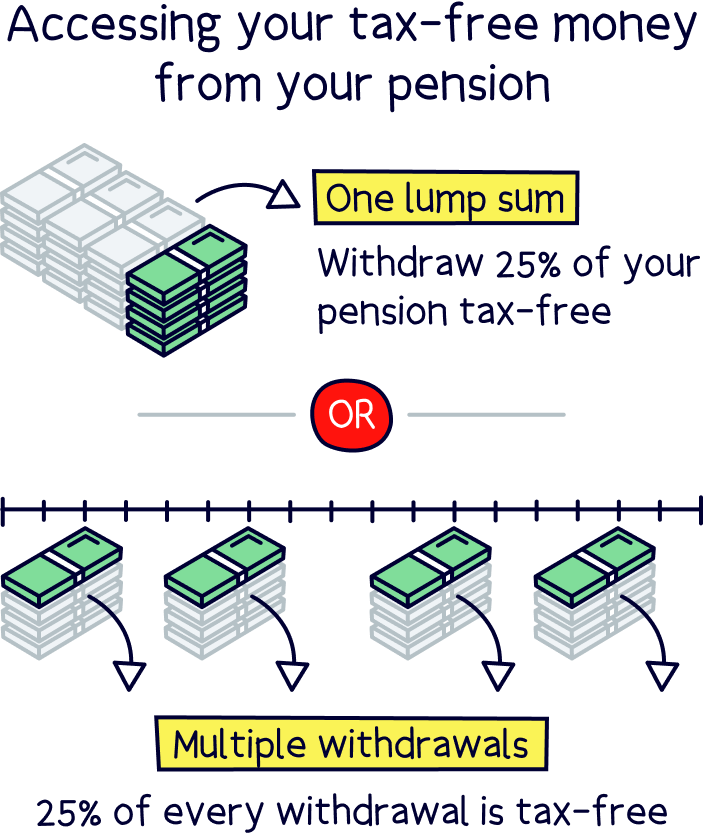
With the remaining 75%, you might have to pay Income Tax on. It's similar to paying tax on your salary now. How much you’ll pay will depend on your total income at the time.
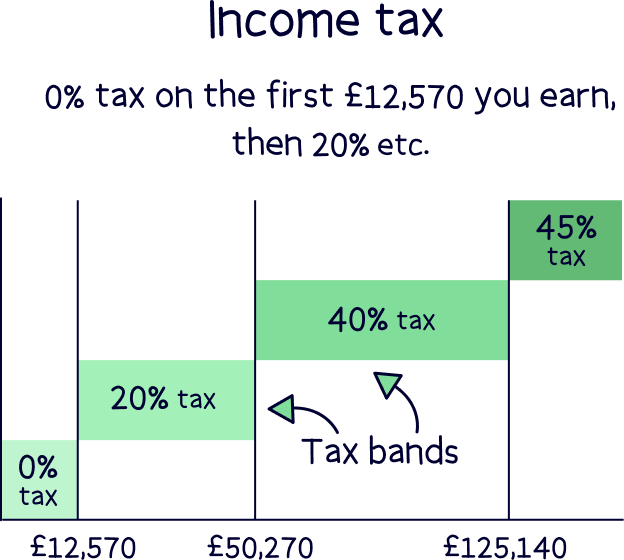
You can decide to withdraw it monthly from your pension pot if you like (called pension drawdown), or you can buy an annuity, which can provide a guaranteed income for the rest of your life (or a set number of years). Here's the difference between a drawdown pension and an annuity.
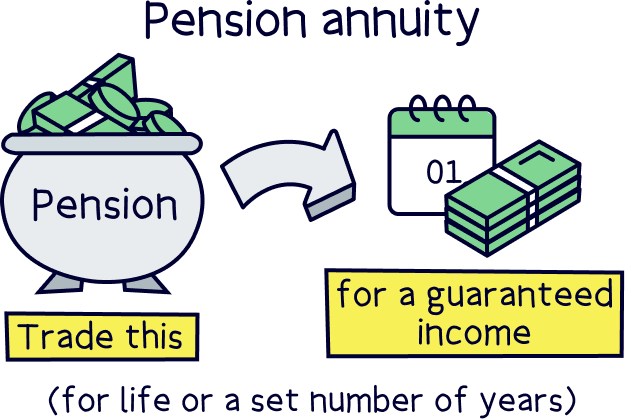
Nuts About Money tip: it can be a good idea to speak to a financial advisor when you’re thinking about retiring, who can go over all your options.
Not sure what financial advisor to use? Check out our recommended financial advisors.
Note: we’re talking about defined contribution pension schemes, where you add money and your money grows as a total pension pot figure (similar to a savings account), ready to take when you retire. The alternative is a defined benefit pension scheme, which is common in government workplaces (such as the NHS), where you receive a set income when you retire (depending on things such as how long you’ve worked there) – these can often be called a final salary pension scheme.
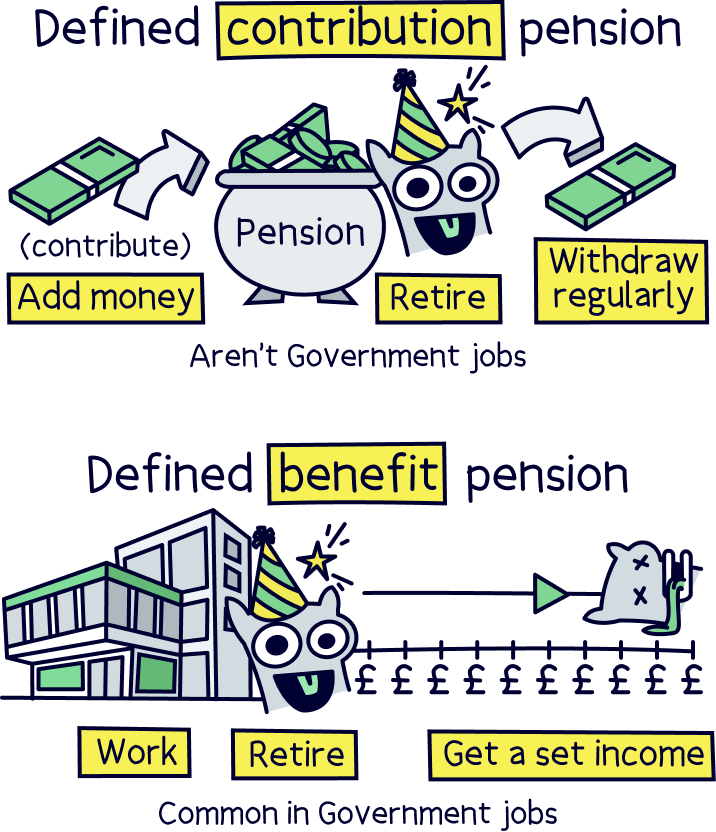
There’s two different types of personal pension, a regular personal pension where the money and pension investments are managed by experts and a personal pension where the investments are managed by you, called a self-invested personal pension (SIPP).
These are very popular, and it’s where the experts handle everything for you – so all you need to do is add money, and that’s it, the experts take care of the pension investments and aim to grow your money sensibly over time.
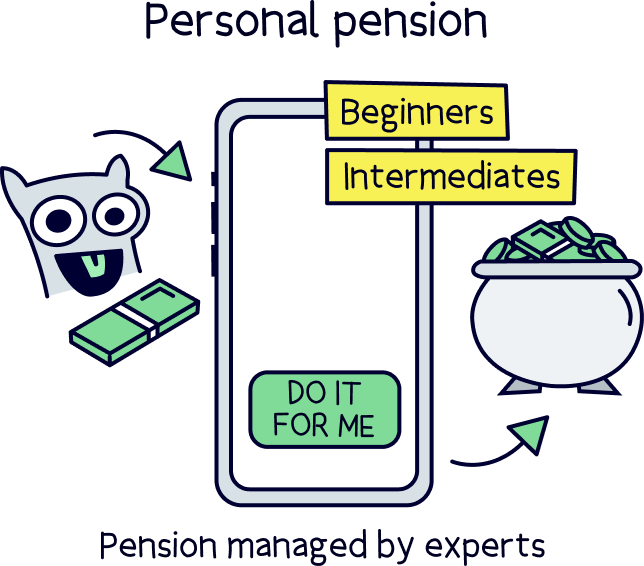
Important: You’ll also get the 25% bonus on your pension contributions automatically.
Scroll up to see our top picks or click top picks for expert-managed pensions. They're easy to use, low cost and has a great track record of growing money over time. And, they’ll be able to transfer over any existing pension(s) you might have, so you don't have pensions all over the place from different jobs.
A self-managed pension, technically called a self-invested personal pension (SIPP), is where you make all the investment decisions yourself.
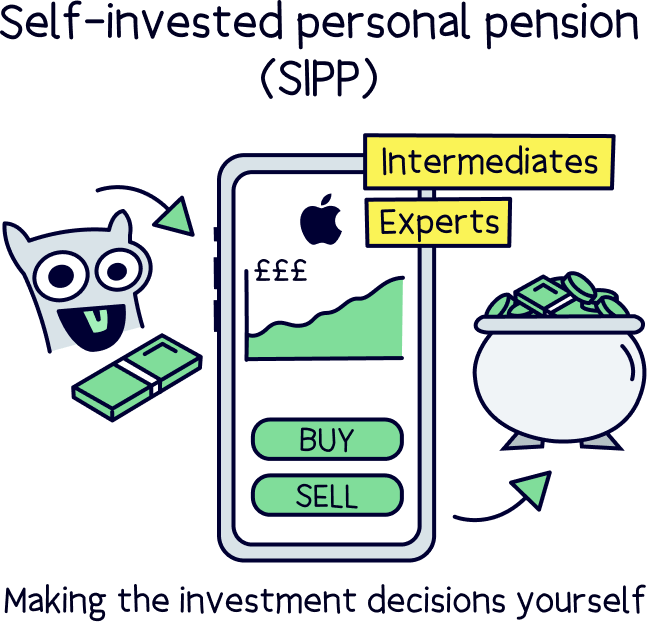
This means choosing which stocks and shares to invest in, or more commonly, choosing which investment funds to invest in. These are collections of investments like stocks and shares. And usually funds specifically designed for retirement savings. These are often called pension funds.
Nuts About Money tip: estimate your yearly retirement income based on your pension pot with our retirement income calculator.
Note: a share is where you own part of a company, you own a ‘share’ of the company. All the shares combined equal the value of the company, which can rise and fall depending on the business’s performance.
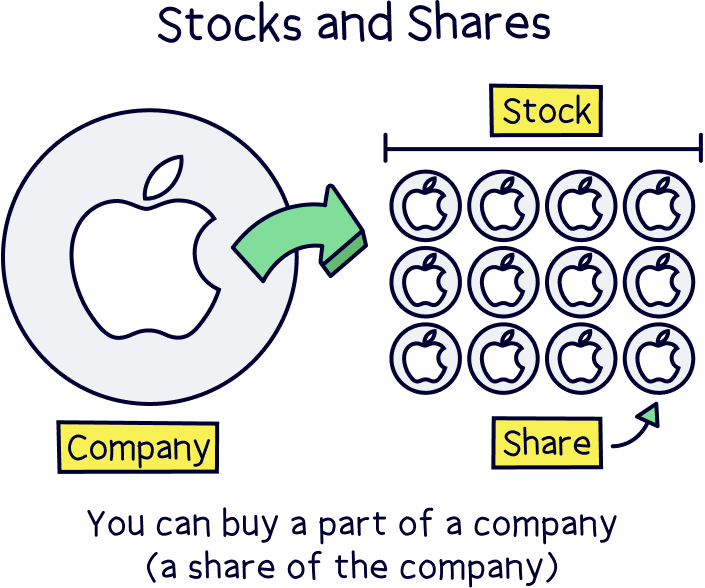
A SIPP is a great option if you want to have more control over your pension, maybe you have a personal pension with the experts already, and want to open another one to make some of your own investments. However, they’re only recommended if you know what you’re doing when it comes to investing.
Note: technically a modern personal pension, that’s also expert-managed (such as Beach¹), is also a SIPP. There’s just a limited range of investments, or pension plans (also called pension funds) to choose from.
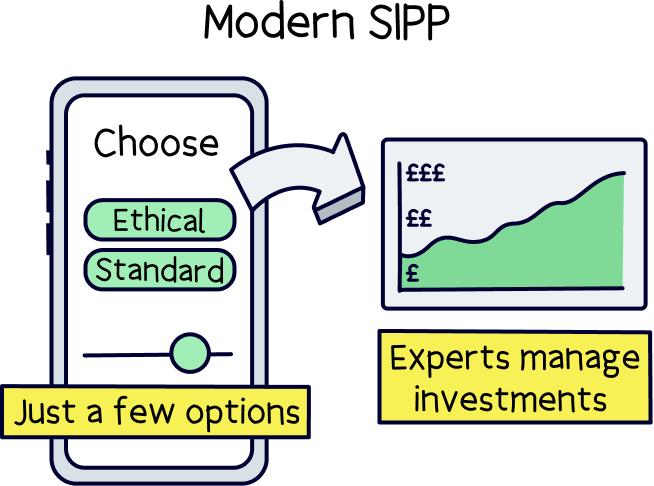
If you think an SIPP is for you, here’s the best SIPP providers.
If you start a new job, you can transfer your existing pension(s) to your new workplace pension scheme that will be setup automatically when you start (most employers have to set up a pension for you by law).
A workplace pension scheme is where your employer contributes at least 3% of your salary, if you contribute 5% – so effectively, you’re getting free money from your employer by paying in. It’s a no-brainer to open one really (rather than opting out).
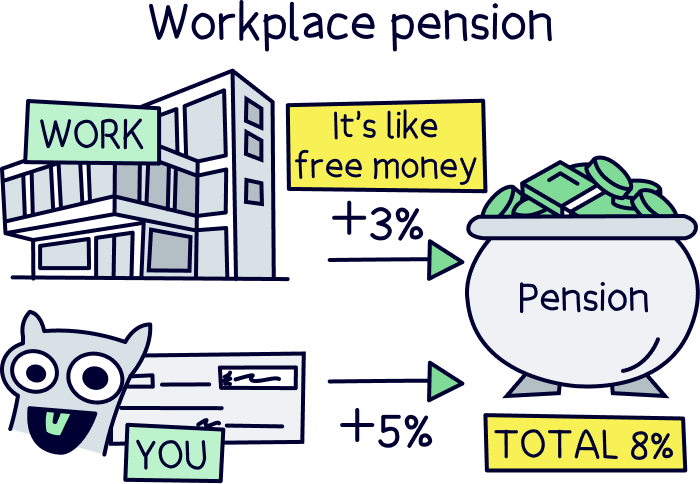
However, this 'free money' is only added on future pension contributions from your salary, and doesn’t apply to any pension transfers.
Although you have the option to pay as much as you like in (up to your total income, maximum limit of £60,000 per year), it’s not particularly beneficial to pay more than 5% into a workplace pension, unless your employer will give you more free money if you add more (some nice employers do this).
After you reach your limit of getting free cash from your employer, it’s typically better to start saving within a personal pension instead – you’ll still be able to save tax-free, as you’ll get the 25% bonus from the Government on your contributions (and more if you pay 40%, or 45% tax).

A personal pension gives you the ability to decide which pension provider you want to use, so you can pick one that’s easy to use, has low fees, and a great track record.
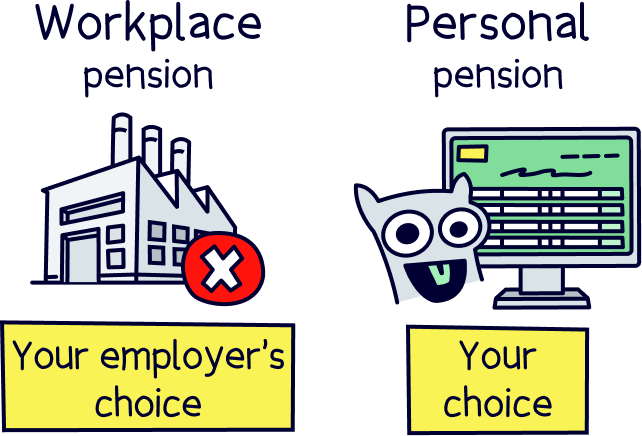
And, you can typically transfer your personal pension to another provider whenever you like (in future) – so you’re not ‘locked in’.
With a workplace pension, you can only use the one your employer has chosen, it's like getting a mobile phone deal but only having one choice. You can't compare the fees or the service it provides. And typically workplace pensions aren’t the best out there, they can be expensive (high fees), and poor performing (investment wise).
Note: with your current workplace pensions you can’t transfer it until you leave your job.
That’s why we don’t recommend transferring your pension to your new workplace pension scheme, as once it’s there, you can’t move it again, and it’s probably not the best provider out there.
If you’re looking for some great pension options, here’s the best pension providers in the UK.
Luckily, this is the easy bit. When it comes to transferring a pension to a personal pension, you don’t have to do much – just request a pension transfer with your new provider and they will handle the whole process (if you pick a great one – such as our recommendations above).
They’ll get in touch with your existing provider, and handle all the paperwork. You just sit back and relax, it will be moved over after a few weeks (or sometimes months).
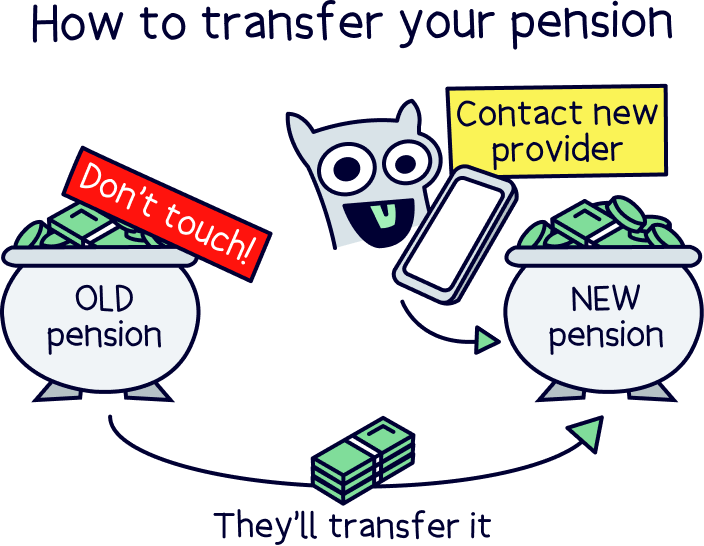
You will need to know who your current provider is though – if you don't know, just email or ask your old work HR department. Or visit Gov.uk to find your pension details.
There's no excuses not to transfer now is there?
If you’ve got a few pensions lying around from old jobs – it’s often a good idea to combine these into your new pension too (called consolidating your pension).
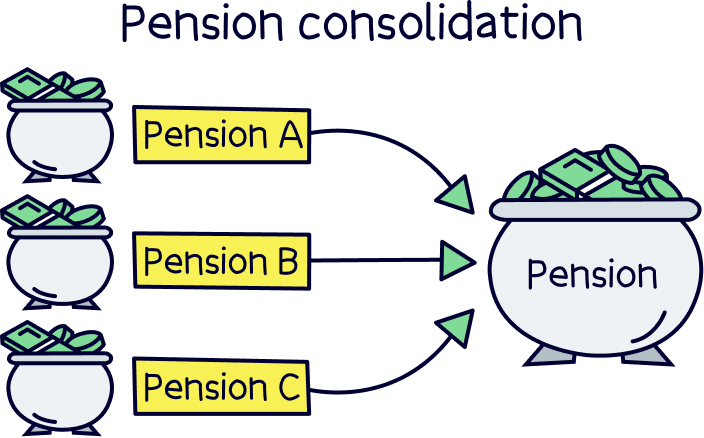
Why? Well, first of all, and an important one, they’ll never get lost!
Lots of people forget about their old pensions and never claim them – there’s actually around 3.3 million lost pensions in the UK, totalling £31.1 billion, according to The Association of British Insurers.
On top of that, it’s likely that your old pensions aren’t with the best providers (they were likely old workplace pensions), and so could be costing you a lot in fees (taken automatically from your pension pot), and probably not growing as fast as they could be either.
If you consolidate your pensions with a great modern pension provider, such as PensionBee¹ or Beach¹ – you’ll be able to see them all in one place (one big pension pot), and your money will be with a provider that’s easy to use, has low fees and a great track record of growing money over time.
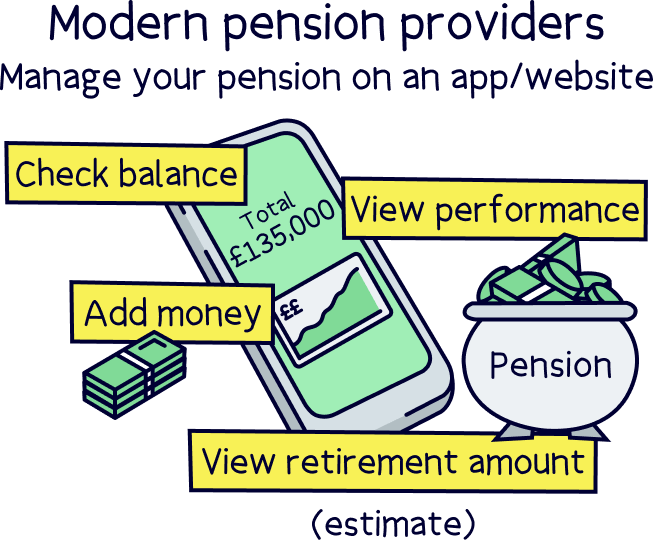
Nuts About Money tip: learn more with our guide: should I consolidate my pensions?
We mentioned that building up a big pension pot is pretty essential these days, in fact, here’s how much you’ll need to save up in total to give yourself the retirement you’d like:
The yearly income figure includes the State Pension, so if you’re not likely to get this, you’ll need to save even more. To qualify for the full amount, which is £230.25 per week, you’ll need to have paid 35 years National Insurance contributions.
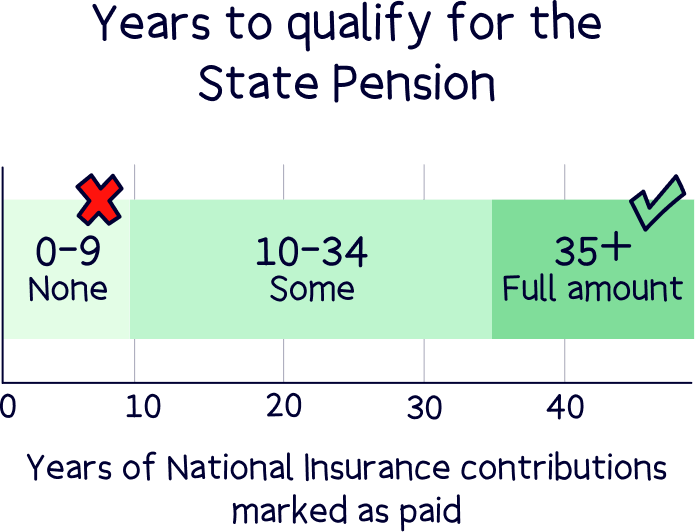
The key to building up a big pension pot, is to first make sure you’re making the most of your workplace pension, by contributing 5% to get the free 3% from your employer (and more if they match it).
After that, you’ll likely need to start saving into a personal pension regularly too – save as much as you can comfortably afford each month.
Now the trick is to be consistent, keep adding to it whenever you can and that's it. Your money should grow within your pension (as the investments go up in value). And as it grows, the new money it makes, begins to make money too – and this snowballs over and over each year, called compound interest, turning small amounts into very large numbers.
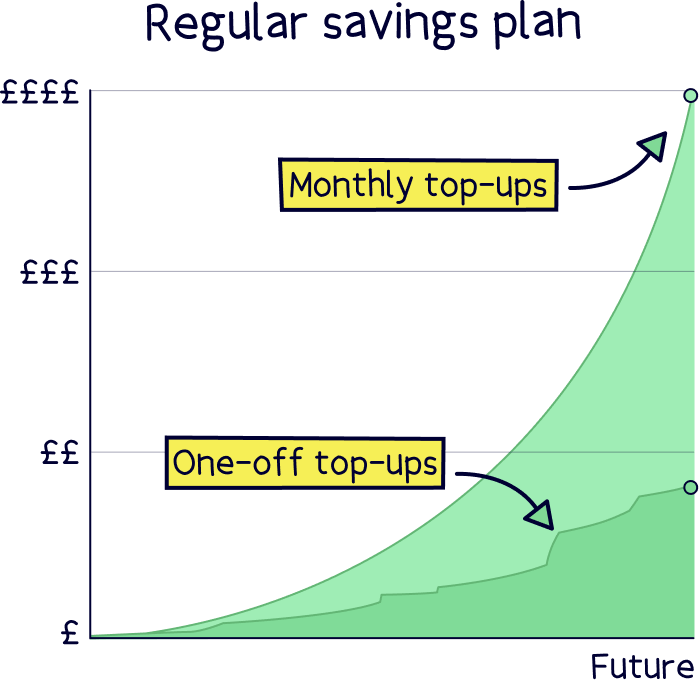
For example, imagine you started with £1,000 and then saved £300 per month, and it increased by 5% per year. After 25 years, you’d have a whopping £184,134.20, and after another 10 years, this would rise to £346,561.45.
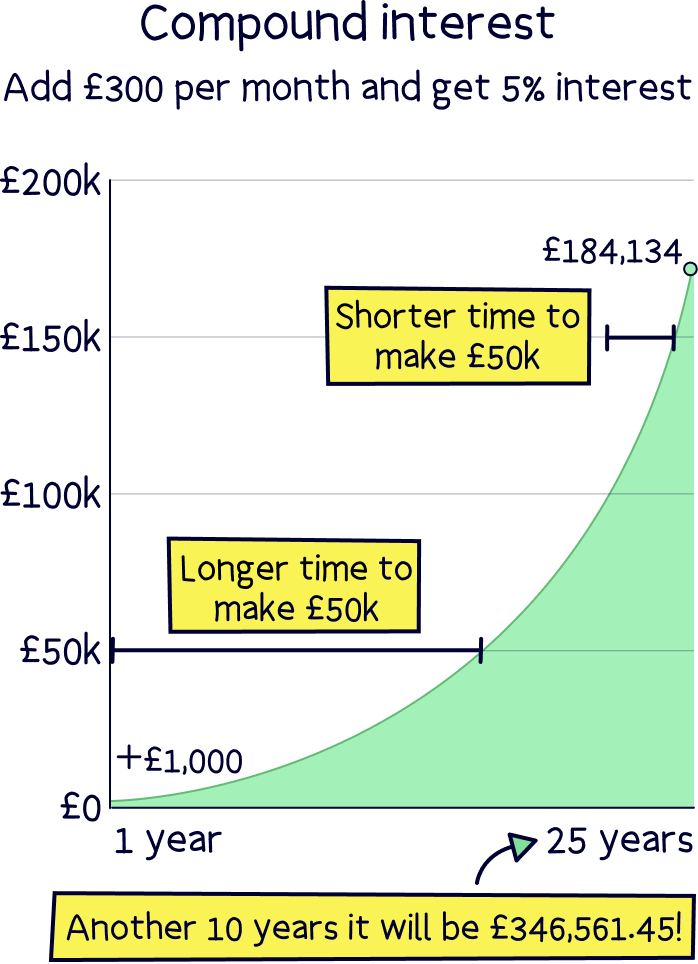
Not bad right? So, if you combine your workplace pension pot with a personal pension, you’ll likely get up to pretty big numbers.
If you’re a bit older, you might not have that long to save, but save as soon as you can, and if you can, pay in a bit more each month – it really will add up over time.
There we have it. The best pension provider to transfer to – PensionBee¹, if you’re looking for an easy to use, low cost option, with great customer service. And, Beach¹, if you’re looking to save into multiple saving accounts in one place (like an ISA and pension).
If you’re looking to make your own investments, with a SIPP, here's the best SIPP providers.
You can also check out the full range of options, with our best personal pensions.
If you’re in two minds about transferring your pension – it’s often a great idea…
Transferring to a great new personal pension means you’re in control of your money, you can choose one that’s low cost, easy to use and a great track record of growing money over time. And, you’ll be able to consolidate your pension(s) into one place, so you never lose track of any old pensions, and can potentially benefit from lower fees and better performance.
Find out by how much your pension could grow over time with our pension calculator.
One last final thing – get saving as much as you can, the 25% bonus will really help over time, your future self will really thank you when your pension savings are nice and big, ready for a comfortable retirement.
And if you want to find out more about pensions visit our pensions home page.
Thanks for reading.
PensionBee tops the list – it’s easy to use, has low fees and a great track record of growing money over time.
We’d love to hear from you, and it will help others too.
PensionBee tops the list – it’s easy to use, has low fees and a great track record of growing money over time.